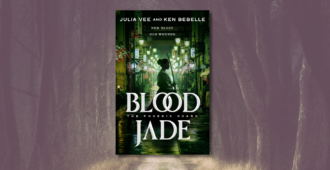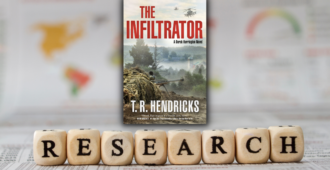Written by Stephen Baker
Have you ever noticed that the “cherry” flavor in candy and cough drops tastes nothing like a real cherry? Yet it shares three attributes with the fruit. It has the same name, it’s red, and it’s sweet. Over time, many of us have grown to accept that fake flavor as a second type of cherry. I actually like it.
In one chapter of my novel, The Boost, I tried to imagine the early years of virtual food apps. The idea in the book is that our cognitive brain implants (or “boosts”) will allow us to live on a diet of tasteless kibble. But unlike house cats, we’ll be able to enhance those pellets with food apps, which will simulate in the brain what it feels like to eat Buffalo chicken wings, cheddar cheese, vanilla yogurt, you name it. Even cherries.
In the book, two brothers, Ralf and Simon, discuss this. Simon is older. He was born before the boosts arrived from China (in the 2040s) and he still struggles adjusting to enhanced cognition. He has trouble sending messages with his thoughts, and the idea of jumping into other people’s boosts and experiencing the world through their senses—“riding shotgun”—is inconceivable to him. His younger brother, Ralf, is a native to boostsphere, and he runs his “dry brain” effortlessly. (For reasons I won’t go into here, Ralf has had his boost ripped out and is rendered “wild.” It feels to him as if he’s had a lobotomy.)
Simon explains to Ralf how in the early years, the food apps were extremely crude. They were as foreign to the real flavors as artificial cherry is to cherry. And yet the younger generation grew up accepting them as the real thing. This always bothered Simon.
Ralf, a technologist, explains that much of the effect is psychological. The apps merely suggest the flavors, and the brain does the rest of the work, matching the experience to its expectations. So if people like Ralf are more willing to believe it’s cherry, that’s what they taste. What’s more, Ralf says, the apps are getting more real every day. Cherry is getting closer to the real cherry. He adds that the virtual sexual worlds—where Simon spends quite a bit of time—are also getting more realistic.
Here Simon complains again. He says he doesn’t want to the virtual worlds to be too real, or he’ll have trouble remembering where he is, and even who he is. This is a real design issue for developers of virtual worlds. If certain types of movement feel too real, people in virtual reality games sometimes experience nausea. It’s called “simulation sickness” and usually involves virtual movement that the inner ear isn’t actually experiencing. This confuses the brain. Sometimes people vomit.
Simon wants there to be a clear divide between the two worlds. This too is a design challenge. For example, gamers might say they want war to feel realistic. But many of them, I’m betting, don’t really want to see what happens to a nearby buddy who’s struck by a hollow-tipped bullet or a grenade. And they certainly don’t want to feel much pain themselves. In short, they want a degree of fantasy. Serving up the right blend is the challenge.
Returning, briefly, to food: perhaps the answer is not to attempt to reproduce unique flavors, like cherry, butter, or a 1976 bottle of Bordeaux, but instead to come up with new ones. Why, in a sensory world with limitless possibilities, should we limit ourselves to stuff that actually grows on bushes or trees, or lives on farms?
The IBM team that built Watson, the Jeopardy computer (which I wrote a book about), is taking steps in that direction. They’re getting the computer to sift through millions of different food combinations and suggest new recipes most likely to excite human taste buds. They recently sent me one of Watson’s first creations, a bottle of Bengali Butternut BBQ Sauce. It’s a yellowish blend featuring wine, squash, tamarind, garlic, and a host of other ingredients dreamed up by a data-combing supercomputer. (I’d give it a B; my wife can’t stand it.)
The Watson team, however, is constrained by what’s available in the physical world. In the future, when all of us (except for the wild) carry networked supercomputers between our ears, developers will be able to manufacture combinations that tickle our senses and have nothing to do with cherries or any other food that we actually put into our mouth. Maybe that’ll satisfy Simon, though I wouldn’t bet on it.
…………………………
From the Tor/Forge May 19th newsletter. Sign up to receive our newsletter via email.
…………………………
More from the May 19th Tor/Forge newsletter:







